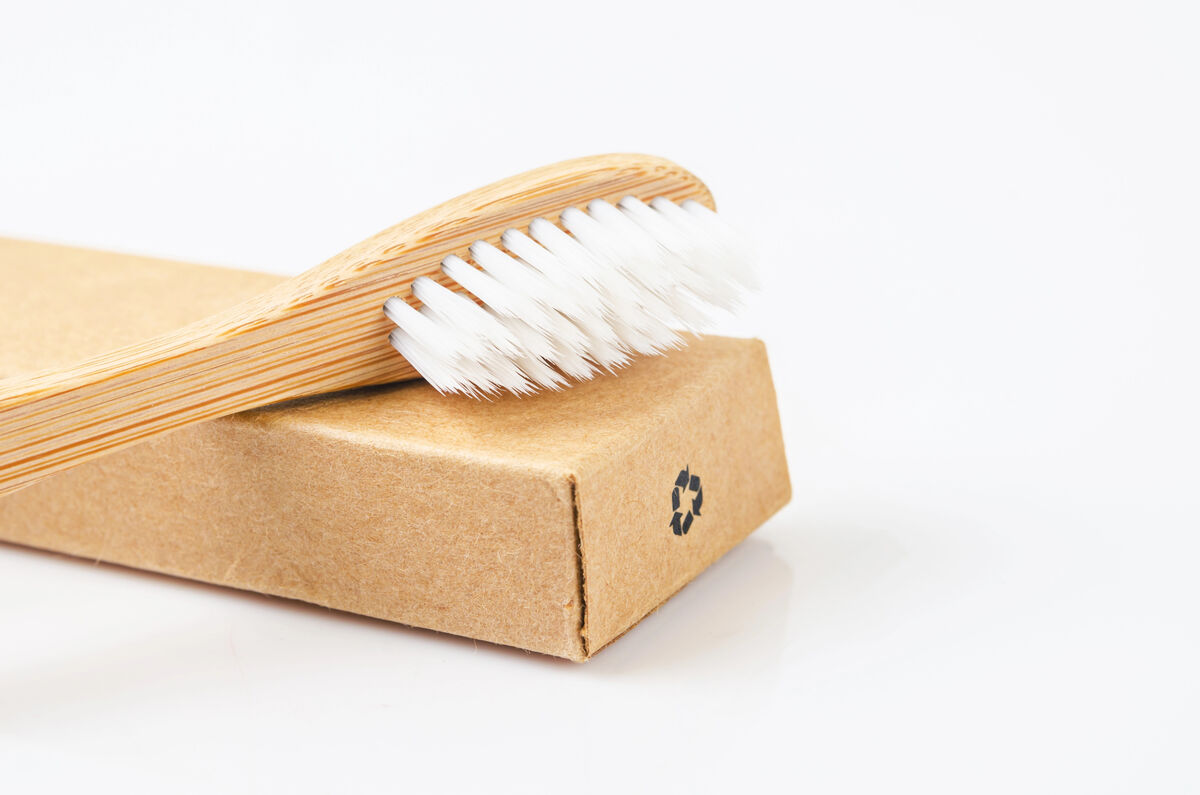Table of Contents

The Wooden Toothbrush: The Eco-Friendly Trend for Sustainable Oral Hygiene
Increasingly popular, wooden toothbrushes are part of a zero-waste and environmentally friendly movement. But are these natural alternatives to plastic brushes as effective at removing plaque? What are their advantages and limitations? Discover our selection of the best eco-friendly toothbrushes available now.
Conventional Toothbrushes: A Scourge for the Planet
Every year in the United States, over 1 billion plastic toothbrushes are thrown away, ending up in landfills and oceans. Composed of materials that are difficult to recycle (a mix of plastic and nylon), they can take over 500 years to decompose and contribute significantly to plastic pollution.
While electric toothbrushes seem like a good alternative with their reusable handles, their disposable heads, replaced every 3 months, also pose a problem. Not to mention the batteries that require proper recycling at the end of their life.
Faced with this reality, wooden (or bamboo) toothbrushes emerge as a more ecological solution. Made from natural, biodegradable materials, they allow us to considerably reduce our daily environmental impact.
The Benefits of the Wooden Toothbrush
Cute and authentic with their zero-waste aesthetic, wooden toothbrushes have a lot going for them:
- Handles made from sustainably managed wood (most commonly bamboo).
- Plant-based bristles (like castor bean fiber) or recyclable nylon.
- Manufactured without BPA or other endocrine disruptors.
- Often feature a slimmer head to easily reach back teeth.
- Lightweight, practical, and ergonomic.
- A 3-month lifespan, just like a conventional brush.
- Compostable or recyclable after use.
- Minimalist packaging made of cardboard or kraft paper.
As a bonus, their soft, natural bristles provide a gentle cleaning, ideal for sensitive gums. It's the perfect way to reconcile effectiveness and ecology!
The Downsides of Wooden Toothbrushes
The only real constraint with these natural brushes is their sensitivity to moisture. You must dry them well after use to prevent the handle from deteriorating. Damp wood can also develop invisible mold, which can be a source of bacteria.
Additionally, not all wooden toothbrushes are created equal. Pay attention to the source of the materials. Look for bamboo from FSC-certified forests. Also, check the manufacturing location and the source of other materials (bristles, packaging).
Our Favorite Eco-Friendly Toothbrush
We are big fans of the toothbrushes from the American brand Brush with Bamboo.
Advantages:
- Handle made from certified organic, wild-grown bamboo.
- Plant-based bristles made from 100% castor bean oil.
- USDA Certified Biobased product.
- Compostable handle and commercially compostable bristles.
- Shipped in plastic-free packaging.
- A simple, elegant design that fully embraces sustainability.
By focusing on plant-based and biodegradable materials from handle to bristle to box, Brush with Bamboo offers a truly eco-conscious product. It's a straightforward, effective, and affordable entry into zero-waste oral care.
Other Eco-Friendly Alternatives
If wood isn't for you, there are other types of environmentally friendly toothbrushes:
- Brushes with replaceable heads like those from Bite (bamboo handle, plant-based bristles) or Goodwell (subscription service).
- Brushes made from recycled plastic like Preserve, which uses recycled yogurt cups.
- Innovative toothpaste tablets from brands like Bite or Huppy, which eliminate the need for plastic toothpaste tubes.
Finally, remember that an eco-friendly toothbrush is only effective if used with the proper brushing technique. Use small, circular motions from the gum toward the tooth without pressing too hard. Be sure to brush every surface and don't forget the gumline. Two minutes, morning and night, is the key to a healthy mouth!
Final Thoughts
Switching to a wooden toothbrush is a great first step toward a zero-waste bathroom. It's simple, fun, and doesn't compromise the quality of your brushing. So why not give it a try? Consider outfitting the whole family—kids often love these fun and natural brushes!
Let's be honest, the wooden toothbrush remains a niche product, often more expensive and less high-tech than an electric brush. But its positive ecological impact and sustainable design largely compensate for these minor drawbacks. It's a committed and responsible choice that more and more Americans are ready to make. How about you?
FAQ About Eco-Friendly Toothbrushes
What is the most eco-friendly alternative to a toothbrush?
You can clean your teeth without a brush using solid toothpaste applied with a finger or a washcloth, but it's not as effective as proper brushing. Chew sticks are also a natural and ancient solution, made from plants with cleansing properties (like miswak).
What are the criteria for a good eco-friendly toothbrush?
The ideal eco-friendly toothbrush has a handle made from sustainably sourced wood or bamboo (FSC certified), soft plant-based bristles, minimal and recyclable packaging, and certifications guaranteeing its quality (e.g., USDA Biobased).
How long does a wooden toothbrush last?
Like a conventional brush, a wooden or bamboo toothbrush should be replaced approximately every 3 months. Beyond that, the bristles wear out and lose their effectiveness. The handle can be kept longer if it's a high-quality, reusable model with a replaceable head.
